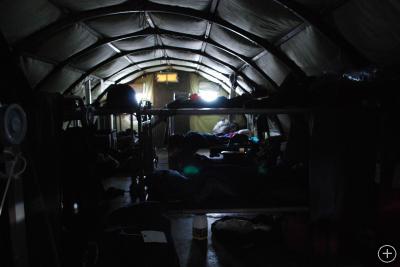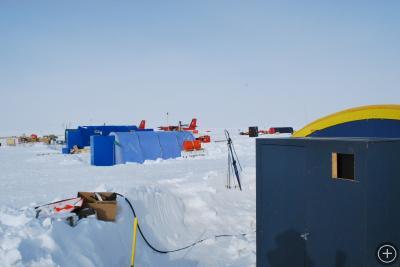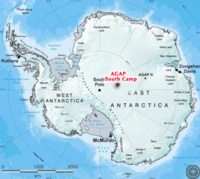AGAP South: Population 42
December 26, 2008
AGAP-SOUTH CAMP, ANTARCTICA– There are finally planes in the airspace of AGAP-South! We flew our first survey lines during the transit of scientists from Pole to our main camp. With the first flight, came the first observation of peaked bedrock under relatively thin ice. Thus far the radar shows the bedrock to be about 1.8 miles below the ice sheet surface and its elevation varies in some regions by up to half a mile. Hard to believe that just under this endless expanse of ice there are mountains. It’s such a secretive part of the world.
While our research group is here doing an airborne survey, another group based out of Penn State University is installing and servicing seismometers. The airborne side is called GAMBIT while the seismic side is called GAMSEIS. Together we are the AGAP project and the occupants of AGAP-South.
Unlike the work I am here to do, GAMSEIS is a multi-year project that began last year. Over the course of the project, whenever there is a large enough earthquake, waves of energy will pass through the earth and be recorded at the GAMSEIS seismic stations. The GAMSEIS group will return and collect their seismometers along with the record of seismic events. Using those data, they’ll be able to piece together the story underlying the Gamburtsev Subglacial Mountains. We’ll better understand how the mountains were built and the nature of the mantle, the molten layer of Earth, that lies below.

This is the inside of the Jamesway tent where the scientists sleep. It’s hot, crowded but somehow still a welcome change from being outdoors.
The weather on Christmas Day forced us to take a break and enjoy the holiday. Both science teams were grounded due to low visibility caused by blowing snow coming out of the South. Despite our 24-hour schedule, dinner at AGAP is the meal most of our population of 42 actually are awake and present to eat. It falls right between the morning flight and evening flight for both science groups and those working the night shift have usually just gotten up. Although one of the cooks is suffering a rib injury, Christmas Dinner was a meal to be reckoned with. It was also a great chance for the whole camp to relax and get to know each other individually rather than categorically as science, flight crew, or staff.
For me part of the holiday excitement was that those of us on the GAMBIT side got to share some of our first data products! We’ve waiting a long time to see these radar profiles with plenty of peaks! The days ahead hold a lot of the same, but there are still firsts and discoveries to be made. I wonder when we will find the biggest mountain peaks and the biggest lake!












What about Nibiru? Just wondering if you guys can actually see it, and if so, why dont you let us ,the taxpayers who ultimatley funded the project know about it. On a different note, hows the cold weather? I suspect that this time of year its a little warmer, but during the winter does it really drop to 80 below? And how does that affect the performance of the scope? Have fun and enjoy
Hey you. I sounds like you are pretty busy down there. I am counting down the days until I can hear your stories in person!!!
I can imagine that after all that data collection it was great sitting down with everyone to a good holiday meal. I’m assuming “A meal to be reckoned with” meant good. Any warm meal would do it for me in that climate. The exchanges in conversation between the groups could yet prove to be another point of discovery.
Happy Discovery
Hi AD thank you for my card. Hope you are having fun in the snow.
Latrese